Water damage is a common problem that can occur in any home, regardless of its age or location. It can cause devastating damage to property and can pose potential dangers to inhabitants if not properly addressed. Understanding the common causes of water damage is important to prevent it from happening and to mitigate its risks.
There are various causes of water damage, ranging from weather-related incidents to plumbing issues. By staying informed on these causes and adopting preventative measures, homeowners can better protect their property. In this guide, we’ll discuss the most common causes of water damage and provide helpful prevention strategies and solutions to ensure your home remains safe and dry.
Weather-Related Causes of Water Damage
Extreme weather events such as heavy rain, floods, and storms are common causes of water damage in homes. The intensity and frequency of these events have significantly increased due to climate change, making it essential for homeowners to take proactive measures to protect their property from water damage.
Flooding
Flooding is a common problem caused by heavy rain or storms. When water levels rise above the capacity of the drainage system, water can quickly enter homes and cause extensive damage. Flooding can occur in any area, but homeowners living in low-lying areas or near bodies of water are at a higher risk. It is essential to have a proper drainage system and flood insurance to mitigate the risks of flooding.
Heavy Rain
Heavy rain can cause water to seep into homes through roofs, windows, or even walls. When rainwater seeps through the roof, it can damage the ceilings, walls, and even the foundation of the house. Proper maintenance of the roof, gutters, and downspouts can prevent rainwater from seeping into the home during a storm.
Prevention Strategies
Homeowners can take proactive measures to prevent water damage caused by weather-related events. Some of these measures include:
- Proper drainage and grading of the landscaping around the home
- Installing French drains to redirect water away from the home
- Regular maintenance of the roof, gutters, and downspouts to ensure they function correctly
- Purchasing flood insurance to mitigate the risks of flooding
By implementing these strategies, homeowners can minimize the risk of water damage caused by weather-related events.
Plumbing Issues as a Cause of Water Damage
Plumbing issues such as leaks, burst pipes, and backups are among the most common causes of water damage in homes. Even small leaks can cause significant damage over time, leading to mold growth, structural damage, and other issues.
Signs of Plumbing Issues
It’s important to be vigilant for signs of plumbing issues in your home to prevent water damage. Some common signs include:
- Dripping sounds or visible leaks
- Low water pressure
- Sudden increase in water bills
- Sewage backups or slow draining sinks or toilets
If you notice any of these signs, it’s crucial to address them right away to prevent further damage.
Prevention Strategies
Regular maintenance and inspections are key to preventing plumbing issues and water damage. Here are some prevention strategies to keep in mind:
- Have your pipes inspected regularly by a professional and make repairs as needed
- Replace old, corroded pipes to prevent leaks
- Insulate pipes in cold areas of your home to prevent freezing and bursting
- Never pour grease or oil down drains
- Avoid flushing anything other than toilet paper down toilets
By taking these preventive measures, you can significantly reduce the risk of plumbing-related water damage in your home.
Dealing with Plumbing-related Water Damage
If you do experience plumbing-related water damage, it’s important to take immediate action to mitigate the damage. Here are some steps to take:
- Turn off the water supply to the affected area
- Document the damage with photos and videos for insurance purposes
- Remove any standing water using a wet/dry vacuum or mop and bucket
- Use fans and dehumidifiers to dry out the area
- Seek professional help for any serious damage or mold growth
By being proactive about preventing plumbing-related water damage and taking swift action if it does occur, you can protect your home and family from the dangers of water damage.
Appliance Malfunction as a Cause of Water Damage
Appliances are essential in our homes, but they can also be the source of devastating water damage. A malfunctioning washing machine or dishwasher can cause significant flooding, resulting in expensive repairs and a huge inconvenience for homeowners.
Appliance malfunctions are often unpredictable, so it’s important to take proactive steps to prevent such accidents from happening. Regular maintenance and inspections are key to ensuring that your appliances are working correctly.
Prevention Strategies:
| Tip | Description |
|---|---|
| Check hoses regularly | Inspect the hoses of your washing machine and dishwasher for any signs of wear or damage. Replace them if necessary. |
| Run appliances only when someone is home | Running your washing machine or dishwasher while you’re out of the house increases the risk of water damage if a malfunction occurs. |
| Clean appliances regularly | Remove any debris from your dishwasher or washing machine regularly to prevent clogs and malfunctions. |
Following these prevention strategies can help minimize your risk of appliance malfunctions and the resulting water damage. However, accidents can still happen.
What to Do if Appliance Malfunction Occurs
If your washing machine or dishwasher malfunctions and causes water damage, don’t panic. Take these steps:
- Turn off the power supply to the appliance to prevent further damage or injury.
- Shut off the water supply to the appliance to stop the flow of water.
- Assess the damage and contact a professional water damage restoration company for help.
Water damage cleanup and restoration can be a daunting task, so it’s best to seek professional help rather than attempting to handle the situation yourself.
Roof Leaks and Water Damage
Roof leaks are a common cause of water damage in homes. Even a small leak can cause significant damage over time if left untreated. Water can seep into the walls and ceilings, causing mold growth and deterioration of the structure. It’s essential to address any signs of roof leaks immediately to prevent further damage to your property.
Prevention
Regular maintenance and inspections are crucial to preventing roof leaks and water damage. Here are some prevention strategies:
- Keep your gutters clear of debris to prevent clogs and water backup.
- Trim tree branches that hang over your roof to prevent damage from falling limbs and leaves.
- Inspect your roof regularly for signs of damage or wear, such as missing shingles, cracks, or holes.
- Ensure your roof is properly ventilated to prevent moisture buildup.
Maintenance
If you notice any signs of roof leaks, such as water stains on your ceiling or walls, it’s crucial to address them immediately. Here are some maintenance tips:
- Fix any leaks as soon as possible to prevent further damage to your property.
- Clean and repair your gutters regularly to prevent clogs and water backup.
- Remove any debris or leaves from your roof to prevent moisture buildup.
- Trim tree branches to prevent damage to your roof.
Professional Services
It’s best to seek professional services for roof repair and maintenance to ensure the job is done correctly and safely. A professional roofing contractor can help identify and repair any issues with your roof, preventing further water damage to your property.
Poor Drainage and Water Damage
Poor drainage is a common cause of water damage in homes. When rainwater or melted snow cannot drain away from your property properly, it can build up and cause significant damage to your home’s foundation, basement, and surrounding areas. In this section, we’ll discuss the impact of poor drainage on your home and highlight prevention strategies and solutions to mitigate risks.
Impact of Poor Drainage
Poor drainage can cause several problems that lead to water damage. When water cannot drain away from your property, it can seep into your home’s foundation and cause cracks, which can lead to leaks and flooding in your basement. Poor drainage can also cause water to pool on your property, which can damage your landscaping and potentially lead to mold growth.
Prevention Strategies
Proper grading is a critical prevention strategy for addressing poor drainage. Sloping the land away from your home’s foundation ensures that water flows away from your property and does not pool around your foundation. Landscaping can also help, as plants and trees can absorb some of the excess water. However, be careful not to plant trees too close to your home, as their roots can damage your foundation.
Solutions
If poor drainage is already causing water damage to your home, you may need to install French drains. French drains are trenches filled with gravel that redirect water away from your home’s foundation and into a drain or dry well. You may also need to install gutters and downspouts to direct rainwater away from your property if you do not have them already.
| Prevention Strategies | Solutions |
|---|---|
| Proper grading | Installation of French drains |
| Landscaping | Installation of gutters and downspouts |
Remember, regular inspections and maintenance are critical to preventing water damage caused by poor drainage. If you notice signs of water damage, such as damp or musty smells, cracking walls, or water stains, seek professional advice immediately to address the issue before it worsens.
Foundation Damage and Water Damage
Foundation damage can be a major cause of water damage in homes. This type of damage can occur due to various reasons, including shifting soil, poor construction, and insufficient drainage. When the foundation of a home is damaged, it can cause water to seep in through cracks and openings, resulting in water damage to the building and its contents.
Regular inspections and maintenance can help prevent foundation damage and mitigate the risk of water damage. It is essential to address any issues as soon as they are detected to avoid further damage. Some prevention strategies include:
| Prevention Strategies | Benefits |
|---|---|
| Regular inspections | Early detection of foundation damage |
| Maintenance and repairs | Prevention of additional damage and restoration costs |
| Waterproofing | Prevention of water entering through cracks and openings in the foundation |
| Sump pump installation | Effective drainage to reduce the risk of water damage |
Signs of Foundation Damage
It is essential to be aware of the signs of foundation damage to detect problems early. Some of these signs include:
- Cracks in walls or floors
- Doors and windows that do not close properly
- Bowing or leaning walls
- Gaps between the foundation and the rest of the building
- Uneven floors
If you notice any of these signs, it is essential to contact a professional as soon as possible to assess the extent of the damage and recommend an appropriate course of action.
Dealing with Water Damage: Cleanup and Restoration
Dealing with water damage promptly and effectively is crucial to avoid further damage to your property. Here are some tips for cleanup and restoration efforts:
Assess the Damage
The first step is to assess the damage and identify the source of the water. If the water damage is caused by a burst pipe or malfunctioning appliance, turn off the water supply to prevent further damage.
Protect Yourself and Your Property
Ensure that you wear gloves and face masks to avoid exposure to contaminated water and potential health hazards. Move any valuable items and furniture to a dry area to protect them from further damage.
Begin the Cleanup Process
There are several steps involved in the cleanup process, depending on the severity of the water damage:
| Severity | Cleanup Process |
|---|---|
| Minor | Use a wet vacuum and towels to remove excess water. Open windows and doors to improve ventilation and facilitate drying. |
| Moderate | Use a submersible pump to remove excess water. You may need to remove carpet and drywall to prevent mold growth. |
| Severe | Seek professional help from water damage restoration experts. They have specialized equipment to remove water and dry out your property quickly and safely. |
Prevent Mold Growth
Mold can start growing within 24-48 hours after water damage occurs. To prevent mold growth:
- Remove wet carpets, furniture, and other items from the affected area.
- Lower the humidity levels in your home by using dehumidifiers and fans.
- Clean and disinfect all surfaces with non-toxic cleaners and bleach.
Seek Professional Help
If the water damage is severe, it’s best to seek professional help from water damage restoration experts. They have the equipment and expertise to mitigate water damage risks and restore your property to its pre-damage condition.
Remember, dealing with water damage promptly and effectively is crucial to avoid further damage and potential health hazards. By following these tips, you can mitigate risks and restore your property to its pre-damage condition.
Prevention Tips to Avoid Water Damage
Water damage can be costly and dangerous, so it’s essential to take preventive measures to avoid it. Here are some tips to help mitigate the risks:
- Regular inspections: Inspect your home for signs of water damage, such as discoloration on walls and ceilings or musty odors. Check your pipes, appliances and roofing for any leaks, and ensure they are in good condition.
- Ongoing maintenance: Regularly maintain your plumbing, appliances, and roofing to prevent malfunctions and leaks. Address any issues immediately, and don’t hesitate to call a professional if you’re unsure how to fix them.
- Proper usage of appliances: Follow the manufacturer’s instructions when using your washing machine, dishwasher, and other appliances to avoid accidents that can cause water damage.
- Proper grading and landscaping: Ensure your yard has proper grading and landscaping to prevent water from gathering against the foundation of your home.
- Installing French drains: Installing a French drain system can help mitigate water damage caused by poor drainage around your home.
- Waterproofing: Waterproofing your basement and crawlspace can help prevent foundation damage and reduce the risk of water damage.
By following these prevention tips, you can reduce the risk of water damage in your home and avoid costly repairs and restoration efforts.
Frequently Asked Questions about Water Damage
Water damage can be a serious issue for homeowners and renters alike. To help you better understand how to prevent and deal with water damage, we have compiled a list of frequently asked questions:
How can I tell if I have water damage?
Water damage can manifest in a variety of ways, such as discolored or damp walls, mold or mildew growth, musty odors, or water stains on ceilings or floors. If you notice any of these signs, it’s important to take action immediately to prevent further damage.
How can I prevent water damage in my home?
There are several prevention tips that can help reduce the risk of water damage in your home. Regular maintenance of appliances, such as dishwashers and washing machines, can prevent leaks and malfunctions. Proper grading and landscaping around your home can ensure proper drainage, while regular inspections of your roof and foundation can catch any potential issues early on.
What should I do if I discover water damage in my home?
If you discover water damage in your home, it’s important to take immediate action to mitigate the damage. Turn off the water source if possible, and call a professional restoration service to assess the extent of the damage and begin the cleanup and restoration process.
Do I need professional services for water damage cleanup and restoration?
While it’s possible to perform some water damage cleanup on your own, professional services are often necessary for larger or more extensive damage. A professional restoration service can assist with water extraction, drying, and mold remediation, as well as provide guidance on prevention strategies.
Does my homeowner’s insurance cover water damage?
Homeowner’s insurance typically covers water damage caused by sudden and accidental incidents, such as a burst pipe or a washing machine malfunction. However, it’s important to review your policy carefully and consider additional flood insurance if you live in an area prone to flooding.
What should I do to prepare for potential water damage?
In addition to regular maintenance and inspections, it’s important to have an emergency plan in place in case of water damage. This may include having important documents and emergency supplies easily accessible, as well as knowing how to shut off your home’s water source in case of a leak or burst pipe.
Where can I find additional resources on water damage prevention and restoration?
There are several resources available for homeowners and renters looking to learn more about water damage prevention and restoration. The National Flood Insurance Program provides information on flood insurance and prevention strategies, while the Institute of Inspection, Cleaning and Restoration Certification offers certification and resources for professional restoration services.
By staying informed about the risks and prevention strategies for water damage, you can take steps to protect your home and belongings from potential damage.








